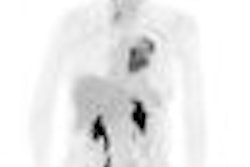U.S. researchers have successfully used PET and a specially developed radioactive compound to image a protein often associated with aggressive breast cancer in breast cancer cells before and after treatment.
This molecular imaging methodology could facilitate development of new targeted therapies not only for breast cancer, but also for certain types of ovarian, prostate, and lung cancers that may be aggravated due to the HER2 protein. The findings from the U.S. National Cancer Institute (NCI) in Bethesda, MD, are published in the July issue of the Journal of Nuclear Medicine.
Senior author Jacek Capala, Ph.D., an investigator for NCI's radiation oncology branch, said the study indicates that PET could be a powerful tool, both to identify patients who might benefit from targeted molecular therapies and to manage their care by measuring response to treatment. As research into HER2 therapies continues, similar techniques could be developed for other cancers overexpressing different proteins.
The HER2 protein is overexpressed in approximately 20% of breast cancers and in some ovarian, prostate, and lung cancers. Tumors with an overabundance of HER2 protein are more aggressive and more likely to recur than tumors that do not overexpress the protein.
Researchers attached the radioactive nuclide flourine-18 to an HER2-binding variant of a small protein, known as an Affibody molecule. PET scans can detect the Affibody compound and allow researchers to visualize breast cancer tumors with HER2 protein in mice. These molecules can also be engineered to specifically bind to other targets for cancer diagnosis and therapy.
The researchers implanted human breast cancer cells, expressing either very high or high levels of HER2, under the skin of mice to show the imaging method could be used to monitor changes in HER2 expression after treatment. They intravenously injected the HER2-targeting Affibody compound and performed PET imaging three to five weeks after tumors had formed.
Four doses of the drug 17-DMAG were administered, which decreases HER2 expression, spaced 12 hours apart. PET scans were performed before the treatment and after each dose. The researchers found that HER2 expression was reduced by 71% in mice bearing tumors with very high levels of HER2 protein, and by 33% in mice bearing tumors with high levels of the protein, compared to the levels measured before treatment and to tumors that did not receive the treatment.
Related Reading
Trastuzumab + RT = no cardiac risk in breast cancer, April 24, 2009
Small HER2-positive breast tumors linked to poor prognosis, December 15, 2008
Trastuzumab cost-effective for early HER2-positive breast cancer, March 9, 2007
Trastuzumab during pregnancy linked to lack of amniotic fluid, March 14, 2005
CNS metastases common among breast cancer patients given trastuzumab, June 16, 2003
Copyright © 2009 AuntMinnie.com




















